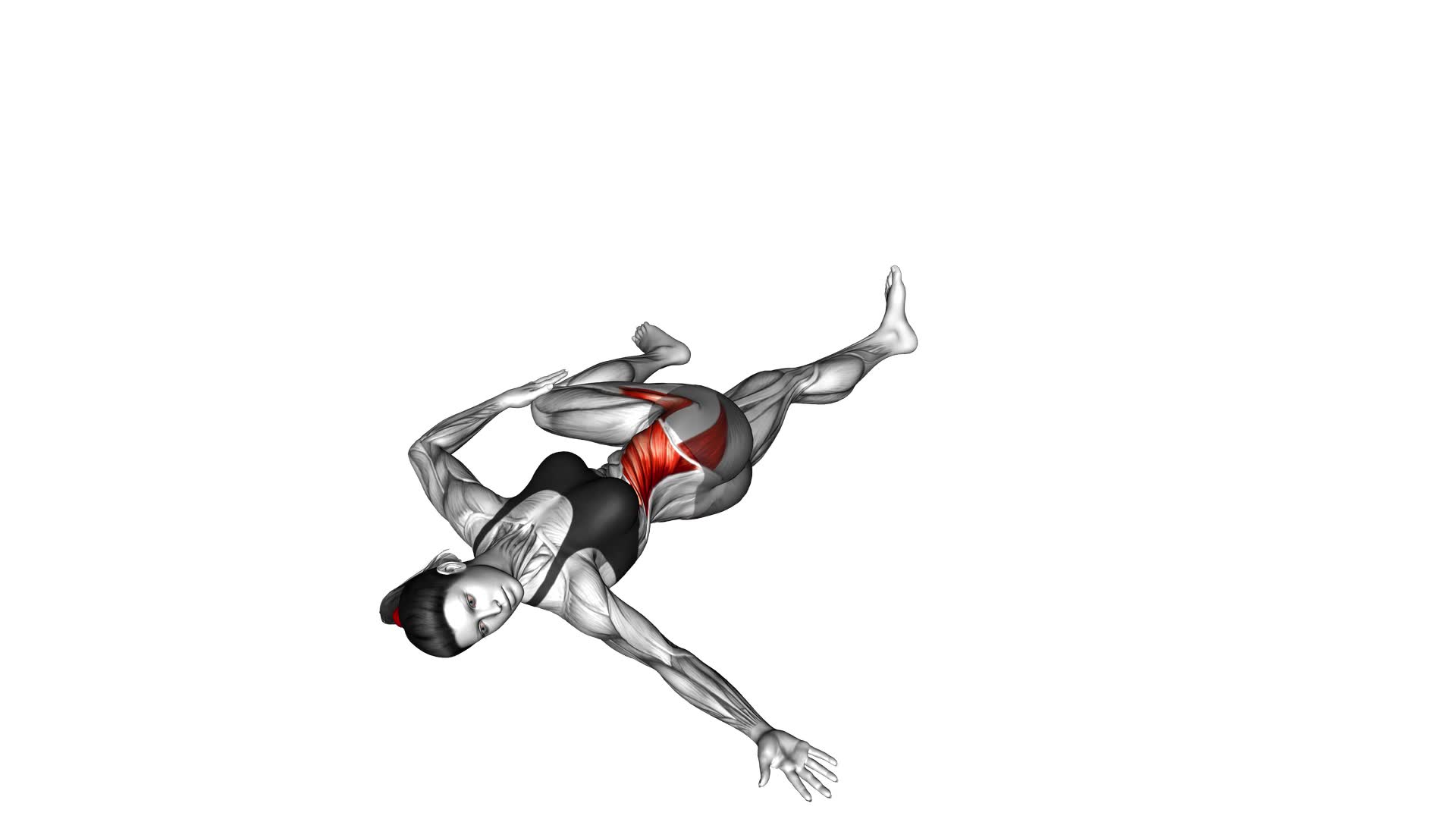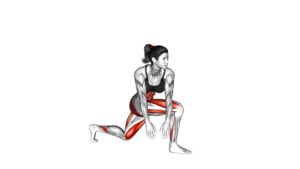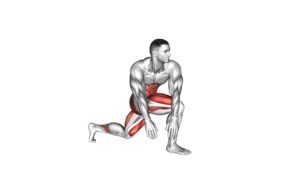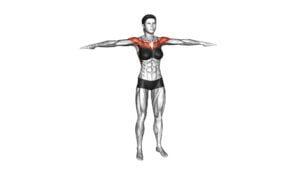Lying Crossover Stretch (female) – Video Exercise Guide & Tips

Get ready to improve your flexibility with the Lying Crossover Stretch!
Watch This Exercise Video
In this video exercise guide, you'll learn the proper form and alignment for this stretch, along with modifications and variations to suit your needs.
Avoid common mistakes and maximize the benefits of this stretch with our expert tips.
So grab your mat and let's get started on your journey to increased flexibility and improved overall fitness!
Key Takeaways
- The lying crossover stretch targets muscles in the hips, glutes, and lower back.
- It improves flexibility and range of motion.
- The stretch helps prevent muscle imbalances and reduces the risk of injury.
- It lengthens and loosens the hip and glute muscles, alleviating tightness and discomfort in the lower back.
Benefits of the Lying Crossover Stretch
The lying crossover stretch provides numerous benefits for your flexibility and overall muscular health. This stretch specifically targets the muscles in your hips, glutes, and lower back, helping to improve flexibility and increase your range of motion. By incorporating this stretch into your routine, you can help prevent muscle imbalances and reduce the risk of injury during physical activity.
Improved flexibility is one of the key benefits of the lying crossover stretch. As you perform this stretch, you'll feel a deep stretch in your hips and glutes, helping to lengthen and loosen these muscles. This increased flexibility not only allows for better movement and performance in activities such as running and weightlifting but also helps to alleviate tightness and discomfort in the lower back.
In addition to improved flexibility, the lying crossover stretch also helps to increase your range of motion. By stretching the muscles in your hips and glutes, you can improve the mobility of these joints, allowing for a greater range of movement in activities such as lunges, squats, and yoga poses. This increased range of motion can enhance your athletic performance and overall physical capabilities.
Proper Form and Alignment
To achieve proper form and alignment during the lying crossover stretch, ensure that you use a comfortable mat or towel to support your body. This will provide cushioning and stability as you perform the exercise.
Here are some important tips to keep in mind for correct form and alignment:
- Correct breathing: As you move through the stretch, focus on breathing deeply and rhythmically. Inhale as you prepare to move, and exhale as you perform the stretch. This will help you relax and engage the correct muscles.
- Muscle activation: To get the most out of this stretch, it's important to activate the right muscles. As you cross your leg over your body, engage your core muscles by gently pulling your belly button towards your spine. You should also feel a stretch in your glutes and outer hip.
- Maintain a neutral spine: Throughout the exercise, keep your spine in a neutral position. Avoid arching or rounding your back, as this can put unnecessary strain on your spine. Instead, focus on keeping your back straight and your shoulders relaxed.
- Keep your movements controlled: Slow and controlled movements are key to maintaining proper form and alignment. Avoid jerky or sudden movements, and instead, focus on smooth and deliberate motions.
Modifications and Variations
Try different variations of the lying crossover stretch to target specific muscles and increase the intensity of your workout. By making advanced modifications to this exercise, you can challenge your body in new ways and achieve better results.
One variation is to use ankle weights while performing the stretch. This will add resistance and help to strengthen your leg muscles even more.
Another modification is to hold a dumbbell or medicine ball in your hands while crossing your legs. This will engage your upper body and core muscles, providing a full-body workout.
To target specific muscle groups, you can adjust the position of your legs during the stretch. For example, crossing your left leg over your right will primarily stretch your right glute and hip muscles, while crossing your right leg over your left will target your left side.
You can also experiment with different angles and ranges of motion to engage different muscle fibers.
Remember to listen to your body and start with modifications that are appropriate for your fitness level.
Common Mistakes to Avoid
Avoid these common mistakes when performing the lying crossover stretch to ensure proper form and maximize the effectiveness of the exercise.
- Not maintaining proper alignment: One of the most common mistakes isn't keeping your body aligned during the stretch. Make sure your shoulders, hips, and legs are in a straight line to avoid straining your muscles and potentially causing injury.
- Rushing through the stretch: Another mistake is rushing through the exercise without giving your muscles enough time to stretch and lengthen. Take your time and hold the stretch for at least 30 seconds on each side to fully reap the benefits.
- Using momentum instead of muscle engagement: Many people rely on momentum to perform the lying crossover stretch, which defeats the purpose of the exercise. Instead, focus on engaging your core and using your muscles to control the movement.
- Neglecting proper breathing technique: Breathing is often overlooked during stretching exercises, but it plays a crucial role in improving technique and maximizing the stretch. Inhale deeply before starting the stretch and exhale as you move into the stretch, allowing your muscles to relax and elongate.
Tips for Maximizing the Stretch
To maximize the stretch in the lying crossover exercise, focus on engaging your core and maintaining proper alignment throughout the movement. By engaging your core, you create stability in your body, allowing for a deeper and more effective stretch. Remember to breathe deeply and exhale as you deepen the stretch, as this helps to release tension and promote relaxation.
Incorporating props can also help to enhance the stretch. Placing a yoga block or bolster under your hips can elevate your pelvis, allowing for a greater range of motion and a deeper stretch. This can be especially beneficial if you have tight hips or lower back issues. Additionally, using a strap or towel to assist with the crossover movement can help to increase flexibility and provide support as you stretch.
When performing the lying crossover stretch, it's important to listen to your body and not push yourself too far. Remember to start slowly and gradually increase the intensity of the stretch over time. Pay attention to any discomfort or pain, and modify the exercise as needed to ensure you're stretching safely and effectively.
Frequently Asked Questions
How Many Times a Week Should I Perform the Lying Crossover Stretch?
To maximize the benefits of the lying crossover stretch, it's important to perform it regularly. Aim to do this exercise at least 2-3 times a week.
By incorporating variations of the lying crossover stretch, you can target different muscle groups and prevent plateauing.
Remember to listen to your body and adjust the frequency and intensity of the stretch as needed.
Consistency is key for achieving flexibility and improving muscle strength.
Can the Lying Crossover Stretch Help With Lower Back Pain?
The lying crossover stretch can be beneficial for lower back pain. By targeting the muscles in your lower back, this stretch can help alleviate discomfort and improve flexibility.
There are various variations of the lying crossover stretch that you can try to target different areas of your body and add variety to your routine.
Incorporating this stretch into your fitness regimen a few times a week can help you reap its benefits.
Is It Safe to Perform the Lying Crossover Stretch During Pregnancy?
During pregnancy, it's important to be cautious with exercises and stretches. When considering pregnancy exercises, it's crucial to ensure they're safe for both you and your baby.
Now, let's address the specific question about stretching during pregnancy. Is it safe to perform the lying crossover stretch?
Keep in mind that certain exercises may be modified or avoided altogether during pregnancy, so it's best to consult with your healthcare provider to determine what exercises are suitable for you.
Can I Do the Lying Crossover Stretch if I Have a Shoulder Injury?
If you have a shoulder injury, it's important to be cautious when performing the lying crossover stretch. This exercise primarily targets the chest, but it can put strain on the shoulder joint.
It's recommended to consult with a healthcare professional or a physical therapist who specializes in shoulder rehabilitation. They can provide modifications for the exercise that will help protect your injured shoulder while still allowing you to benefit from the stretch.
How Long Should I Hold the Stretch in the Lying Crossover Position?
To get the most out of the lying crossover stretch, it's important to know how long to hold the position. Holding the stretch for 30 seconds to a minute is a good starting point. This allows your muscles to relax and lengthen, increasing flexibility.
Beginners can modify the stretch by keeping their knees bent or using a prop like a pillow for support. Incorporating this stretch into your daily routine can bring benefits like improved posture and reduced lower back tension.
Conclusion
In conclusion, the lying crossover stretch is a beneficial exercise for stretching and improving flexibility in the muscles of the lower body.
By maintaining proper form and alignment, you can effectively target the muscles in the hips, glutes, and thighs.
Remember to avoid common mistakes and make modifications or variations as needed.
By following these tips and maximizing the stretch, you can reap the full benefits of this exercise.

Author
Years ago, the spark of my life’s passion ignited in my mind the moment I stepped into the local gym for the first time. The inaugural bead of perspiration, the initial endeavor, the very first surge of endorphins, and a sense of pride that washed over me post-workout marked the beginning of my deep-seated interest in strength sports, fitness, and sports nutrition. This very curiosity blossomed rapidly into a profound fascination, propelling me to earn a Master’s degree in Physical Education from the Academy of Physical Education in Krakow, followed by a Sports Manager diploma from the Jagiellonian University. My journey of growth led me to gain more specialized qualifications, such as being a certified personal trainer with a focus on sports dietetics, a lifeguard, and an instructor for wellness and corrective gymnastics. Theoretical knowledge paired seamlessly with practical experience, reinforcing my belief that the transformation of individuals under my guidance was also a reflection of my personal growth. This belief holds true even today. Each day, I strive to push the boundaries and explore new realms. These realms gently elevate me to greater heights. The unique combination of passion for my field and the continuous quest for growth fuels my drive to break new ground.



